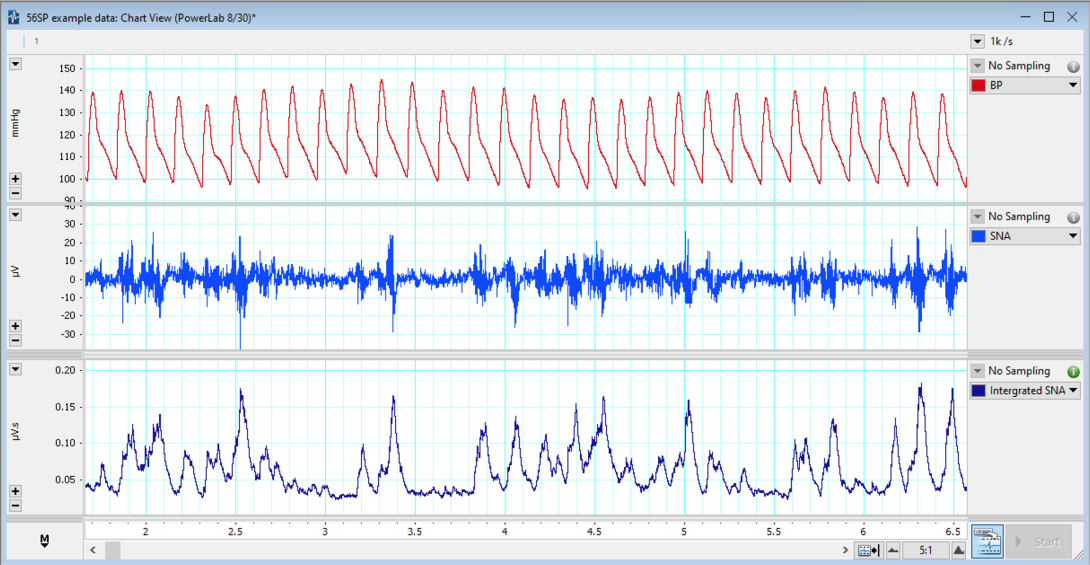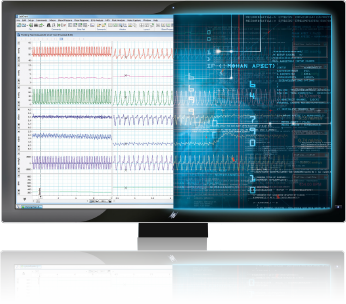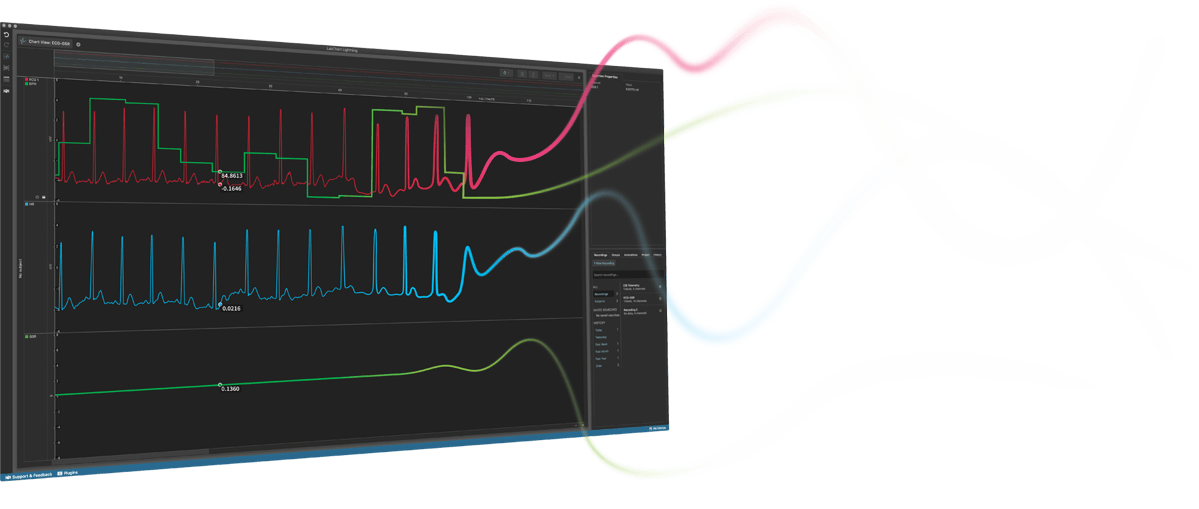The autonomic regulation of blood flow to various systems is dominated by the activity of the sympathetic nervous system. Alterations of SNA to most vascular beds (e.g. renal, splanchnic, skeletal muscle) results in acute arterial pressure responses. Increased SNA constricts blood vessels (vasoconstriction) primarily through the release of noradrenaline (norepinephrine), thereby causing an increase in blood pressure. Recent evidence indicates that overactivity of the sympathetic nervous system is a major factor in the development of hypertension (high blood pressure) and further increases the fluid retention problems seen in heart failure. Due to its accessibility and well characterized functional significance, the renal sympathetic nerve is the most commonly investigated sympathetic nerve
The TRM56SP telemeters allow users to simultaneously record SNA and blood pressure to give an insight into the autonomic control of cardiovascular physiology. The input range of the SNA leads is ±60µV making it ideal for activity recording from fine, peripheral autonomic nerves studies in studies of stress, cardiovascular control and the development of hypertension.
Renal SNA Recording
Recordings of renal sympathetic nerve activity (RSNA) are typically 20 to 50 μV in amplitude and performed using amplifiers with a bandwidth of 50 Hz to 3 kHz. The amplified nerve potentials are then rectified and integrated over periods between 0.2 and 1 second to quantify activity. However, many researchers quantify the level of SNA as a percentage of control because the actual voltage varies depending on the contact between the nerve and recording electrode. Therefore, changes in SNA are commonly measured as changes per unit of time.





